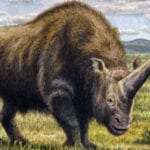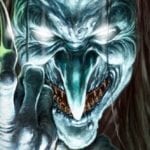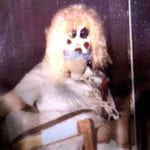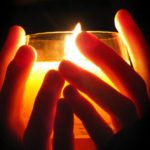 Miscellaneous
Miscellaneous  Miscellaneous
Miscellaneous  Politics
Politics 10 Lesser-Known Far-Right Groups of the 21st Century
 History
History Ten Revealing Facts about Daily Domestic Life in the Old West
 Weird Stuff
Weird Stuff 10 Everyday Products Surprisingly Made by Inmates
 Movies and TV
Movies and TV 10 Actors Dragged out of Retirement for One Key Role
 Creepy
Creepy 10 Lesser-Known Shapeshifter Legends from Around the World
 Animals
Animals 10 Amazing Animal Tales from the Ancient World
 Gaming
Gaming 10 Game Characters Everyone Hated Playing
 Books
Books 10 Famous Writers Who Were Hypocritical
 Humans
Humans 10 of the World’s Toughest Puzzles Solved in Record Time
 Miscellaneous
Miscellaneous 10 Ironic News Stories Straight out of an Alanis Morissette Song
 Politics
Politics 10 Lesser-Known Far-Right Groups of the 21st Century
 History
History Ten Revealing Facts about Daily Domestic Life in the Old West
Who's Behind Listverse?

Jamie Frater
Head Editor
Jamie founded Listverse due to an insatiable desire to share fascinating, obscure, and bizarre facts. He has been a guest speaker on numerous national radio and television stations and is a five time published author.
More About Us Weird Stuff
Weird Stuff 10 Everyday Products Surprisingly Made by Inmates
 Movies and TV
Movies and TV 10 Actors Dragged out of Retirement for One Key Role
 Creepy
Creepy 10 Lesser-Known Shapeshifter Legends from Around the World
 Animals
Animals 10 Amazing Animal Tales from the Ancient World
 Gaming
Gaming 10 Game Characters Everyone Hated Playing
 Books
Books 10 Famous Writers Who Were Hypocritical
 Humans
Humans 10 of the World’s Toughest Puzzles Solved in Record Time
10 Evil Winter-Dwelling Beasts From Folklore
With thoughts of sugarplums dancing in your head, you may not be worried about what goes bump in the night during these long winter months. However, Santa Claus and Jack Frost aren’t the only characters that come with the cold, dark winter.
Throughout history, several mythical creatures and monsters have scared generations of people who were getting into the Christmas spirit. Winter brings not only cheer and happiness but fright and terror to those who still believe in ancient myths of ice monsters and wicked snow creatures.
While most of us are getting ready for winter with holiday preparations and hand warmers, others are anxiously awaiting the arrival of a wild assortment of monsters. Here is a collection of evil winter creatures you definitely don’t want to run into this holiday season.
10 Yuki-onna
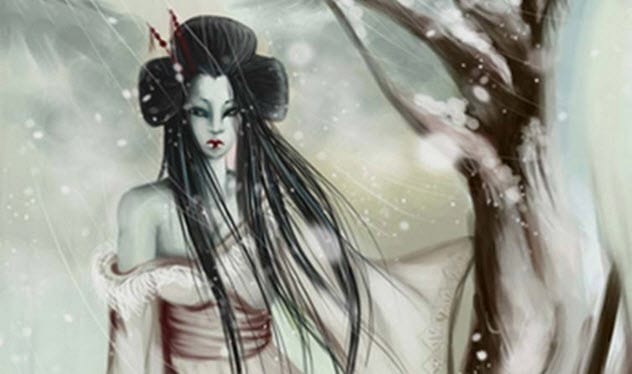
Just because she’s pretty doesn’t mean you should ask her in for a drink. Yuki-onna (“snow woman”) is a myth with apparent sightings documented as far back as the 14th century. The Yuki-onna is said to be an evil being taking the form of a beautiful woman.
With long, dark hair and skin so pale that it appears transparent, she is a beautiful woman at first sight. Many say that she does not even have feet as she glides around during harsh snowstorms and blizzards. She appears to travelers who are lost or stranded in bad weather and kills them with her frigid breath, leaving behind nothing but frost-coated corpses.
Some say that she is able to manifest as a woman holding a baby, enticing well-intentioned strangers to help her and her poor child out of the storm. As soon as a mortal touches her baby, that human being is frozen on the spot. While her beauty is enticing, it is known that she can be identified by her eyes, which strike fear into the heart of any mortal if he is unfortunate enough to gaze into them.[1]
9 Chenoo
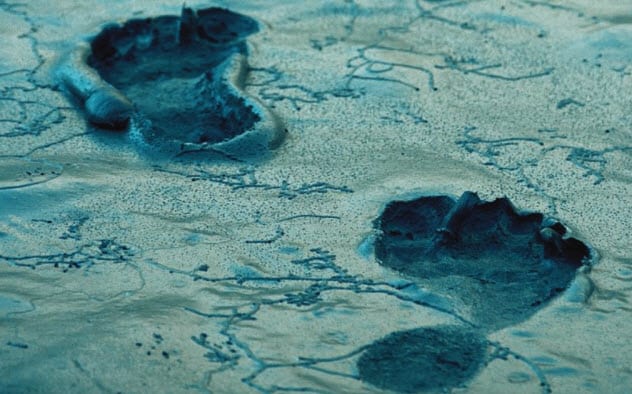
Chenoos also take a humanlike form, and yet they are much more frightening. Of course, this may be because they are human-eating giants. Maybe the most terrifying thing is that they were once mere humans, which essentially makes them really tall, overweight cannibals with a lack of proper hygiene.
Occasionally, an evil spirit will possess a human, turning him into a Chenoo. More often, however, a human is turned into a Chenoo as a result of such a heinous crime that it is believed one cannot remain human after it is committed.[2]
This crime?
Cannibalism. Yes, almost every Chenoo was once just a man-eating human. Due to this crime, it is said that the heart turns to pure ice, triggering the change from human to monster.
Unlike most other evil creatures, though, a Chenoo can return to its human form. To do this, the heart must either be extracted or thrown up by the Chenoo itself. Then the icy heart must be destroyed by being completely melted. When the Chenoo has its heart replaced by a human heart, it turns back into a human.
The lesson here? Don’t eat other people!
8 Ijiraq

An Inuit shape-shifter, the Ijiraq preys on small children and those with naive hearts. No one knows what an Ijiraq looks like in true form as it is invisible when not shape-shifting into its decided form. As a result, they are very hard to spot.
They can appear as any sentient being they desire, making their tactic similar to guerrilla warfare. It is said that they live in a world between the living and dead. This world cannot be reached by mortals.
If a human were to be near their home, the human is suddenly confused and gets turned around, ensuring their evil stomping grounds are never discovered. However, these beasts can take children with them and then feast on the kids with their shape-shifting friends.
Ijiraqs lure children far away from their villages where these monsters will abandon, hide, or eat the children. If the child is spared as a meal, he still will never be able to find his way home, making his death drawn-out and cruel.[3]
The only hope for surviving such an encounter is listening closely. When an Ijiraq arrives, a humanlike whistle is heard. Yet there is no source. If you hear this upon meeting someone, it is a good sign to run as it’s probably a shape-shifter looking for its next tasty meal.
7 Nuckelavee
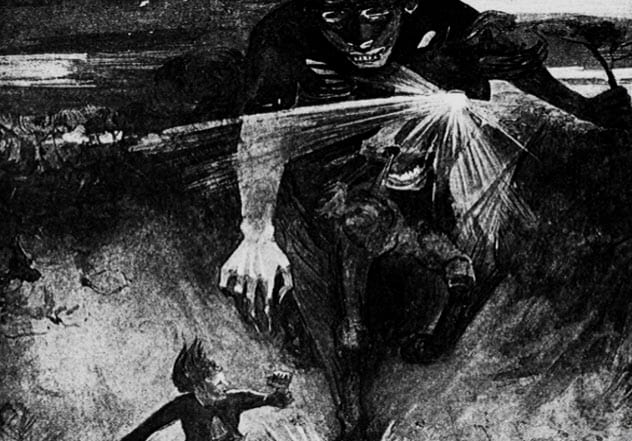
This creature is the centaur from your worst nightmares. A crude depiction of a creature similar to a centaur yet much more sinister is what people typically believe that a nuckelavee looks like. They have two heads with one giant red eye that resembles flames.
Most disturbing, perhaps, is the fact that they have no skin and you can see their black blood coursing through their twisted veins. A demon that roams the snow-laden grounds of Scotland’s uppermost northern isles is confined during the summer months, which only makes it more eager to cause pain and suffering during the winter.
During the summer, the Sea Mither, or spirit of summer, is able to keep these demons at bay because they live underwater then and only emerge when the Sea Mither can no longer control them. It is said that the breath of the nuckelavee is toxic, and just one faint breath can kill even the strongest of men.[4]
The nuckelavee has been blamed for past famines and droughts within the surrounding villages. The villagers used to say a prayer each time its name was uttered as they were terrified that the nuckelavee would torment them for speaking such taboo.
6 Mahaha
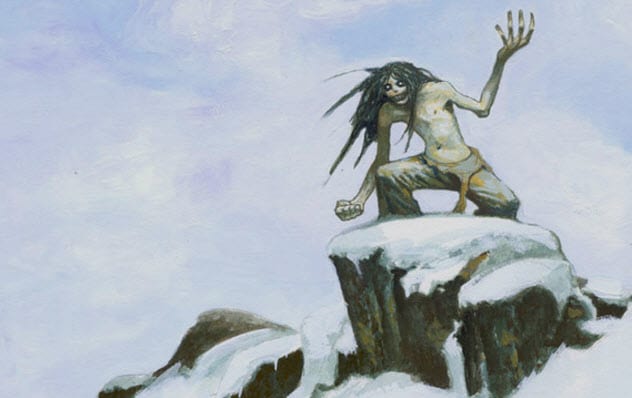
The Mahaha is another Inuit demon that terrorizes the Canadian Arctic. They are extremely gaunt yet muscular, with strength unimaginable. They have ice-blue skin that appears to be stretched so tightly around their bodies that their bones are visibly protruding. The creature’s head hangs low as its large, sullen eyes peer at its victims from behind the stringy hair falling over its face.
The Mahaha is always smiling and giggling as it thoroughly enjoys the torture of its victims and becomes giddy upon having a new one. This monster has inhumanly long fingernails that resemble knives. With these nails, the Mahaha “tickles” its victims to death. This tickling is merely shredding the victim bit by bit.[5]
The mark of the Mahaha is just as unsettling as the sight of the creature itself. Every last victim of the Mahaha is left with a twisted, evil smile bared as the corpse lay frozen after the attack. The sight of a victim alone was enough to strike fear into the hearts of generations lost long ago.
5 Pal-Rai-Yuk
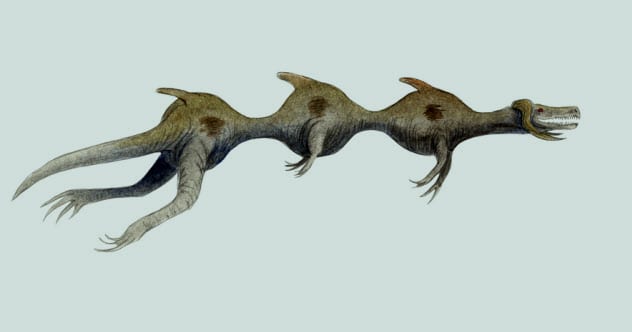
Yet another Inuit creature, the pal-rai-yuk is purportedly a giant sea monster that resides in the bays of the Alaska Key Islands. This sea creature has a snakelike head that protrudes from the water almost 3 meters (10 ft). Although its upper body resembles a snake, it is said to have thick fur, six legs, three dorsal fins, and two heads. Each head has a long, slimy tongue ready to eat up.
Despite its size, the pal-rai-yuk is known for being able to whisk its human victims right off docks and piers so quickly that no one but the victim even notices. If one is crazy enough to try to set up a playdate with this monster, it is rumored that the creature can also be summoned.
To call the pal-rai-yuk, one must tap on the bottom of a wooden pier. If you’re feeling a little crazy, you can even summon it via the bottom of a wooden kayak. While this monster stays in the water throughout most of the year, it is able to “swim through the earth” with the aid of snow during the winter months.[6]
4 Kogukhpak
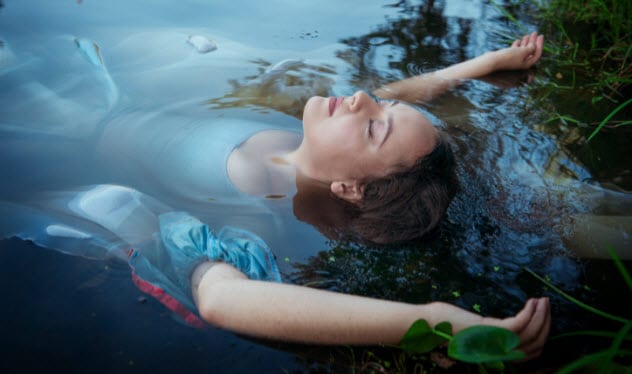
One of the oldest Yupik mythological tales is the story of the Kogukhpak. Over 40,000 years ago, it was believed that mammoth carcasses were actually the corpses of these subterranean monsters. These massive creatures were said to have large tusks like a mammoth. Yet, they had bulbous bodies and legs like frogs.
As the Sun was the only thing that could kill them, they lived underground for most of the year. The winter solstice is the only time that they can emerge from the earth to hunt and ignite the fear of the locals.[7]
Those mammoth skeletons were rumored to be from the foolish Kogukhpak that stayed out a little too long during their solstice solitude and were evaporated as soon as the smallest bit of sunlight touched their round, bulging bodies.
3 Qiqirn
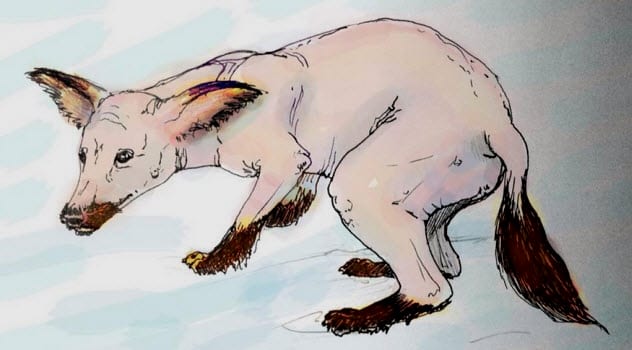
While some believe it to be a vampire dog or a hellhound, the Qiqirn is typically known as a large, evil, spirit dog. It is very easily distinguished from a regular dog as it is completely bald with the exception of its paws, the tip of its tail, and the area around its mouth.
These spirit dogs approach travelers during the winter months when they are alone at night in unknown lands. When the beasts get close enough to the traveler, he will suffer endless fits until liberated from the pain by death.
While this may seem awful, it is easy to ward off a Qiqirn as they are known for being just as skittish as they are fierce. As long as you can identify the beast, you can escape its wrath. Simply shouting the name of the being sends it running with fear.[8]
A Qiqirn feeds off the unwitting and feels threatened when its intended victim knows its intentions.
2 Wendigo
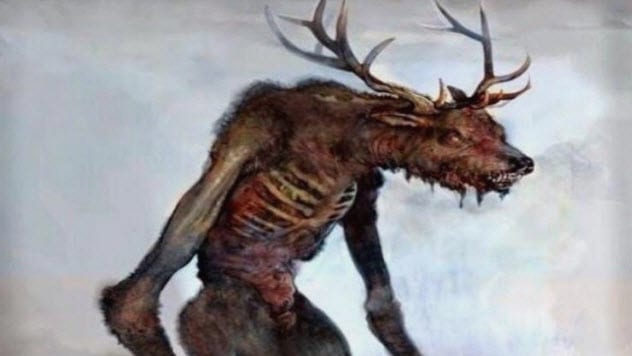
Native to the northern forests of the Atlantic coast, wendigos are humanlike, man-eating monsters from Algonquian folklore. Known for its striking height of 5 meters (15 ft), this creature is typically associated with famine and hunger as well as the disappearances of many villagers long ago.
Wendigos have an ash-gray skin tone with inhumanly sullen eyes. Their lips are said to be dried out and always covered in blood. While they have a humanlike torso, they have unnaturally long limbs with razor-sharp claws at each end. Their heads are a human-wolf hybrid with horns above the forehead.
Known as “the spirits of lonely places,” wendigos lure lone victims away from others with an imitation of a human voice. The creatures offer warmth and shelter. Once a human is successfully trapped, the wendigos continue to feast on the victim’s flesh. It is said that the putrid smell of their breath reeks of death and decay.[9]
These creatures can also possess humans. If a person is too greedy, he could be susceptible to wendigo possession and develop an insatiable craving for human flesh himself.
1 Kallikantzaroi
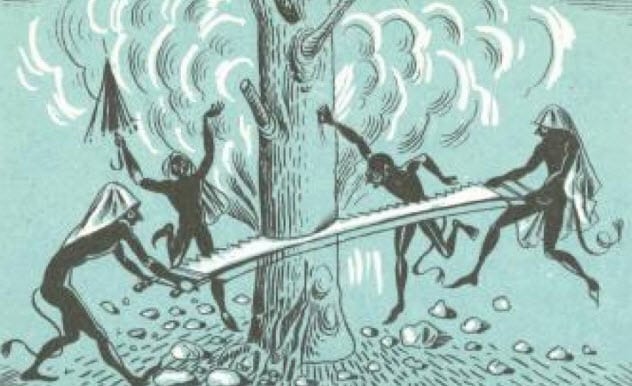
Ever met someone who tried extremely hard to be the best at something, but he could never seem to achieve his goal?
In the mythical world, that is a kallikantzaros of Greek mythology. No matter how hard they try at being evil, they are just no good at it.
These tiny, gnomelike creatures spend their lives working from home, which just happens to be the center of the Earth. They spend the year hacking down the tree of life, which holds up the Earth, in an attempt to end mankind.
They have one flaw, though. During the 12 days of winter solstice, kallikantzaroi can come to the Earth’s surface, something they cannot resist. While they are not inherently evil, they do wreak havoc on humans’ homes and villages when let out.[10]
People would ward them off by setting colanders on their doorsteps before nighttime. Kallikantzaroi are known for being incredibly dumb, so much so that they cannot even count to three. It is believed that they will waste away in front of the colander trying to count all the holes until sunrise, when they are forced back into the Earth.
When these annoying creatures finally return to their home, they will find that the tree of life has completely restored itself. They spend the rest of the year trying to hack it down again until they can come to the surface once more.
Read about more folklore monsters on 10 Folklore Monsters That Persist In The Modern Age and 10 Bloodsucking Monsters From World Folklore.
